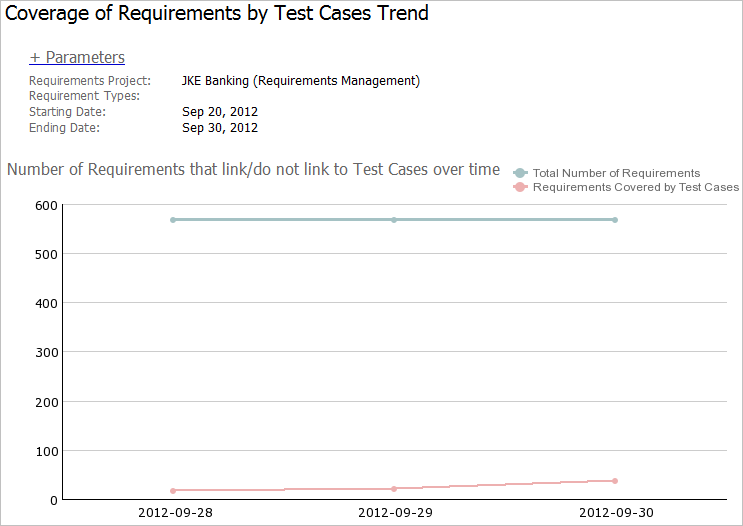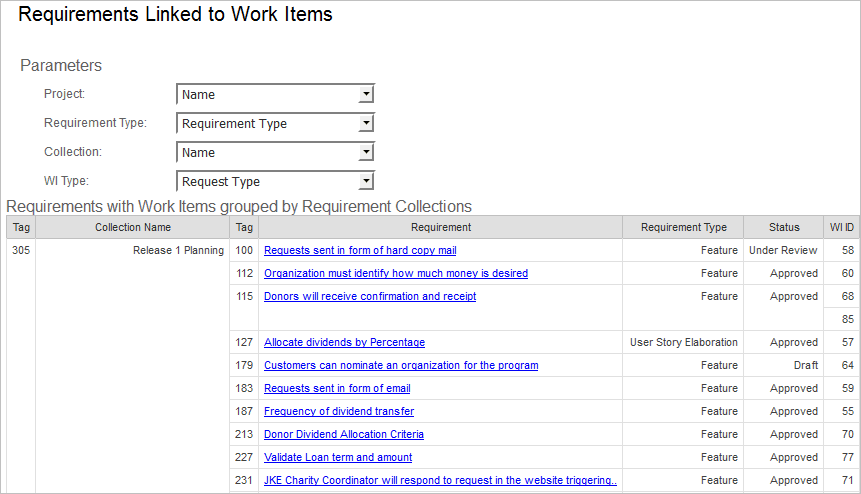Use requirements metrics to report on, evaluate and improve project performance
The requirement metrics provide an analytics view of the data. They represent processed data and are based on the operational data available from the repository, which is loaded into the data warehouse and then aggregated into measures based on some interpretation. Measures can be counts or sums of numeric data, such as the sum of all weight points of test case execution records. They allow the user to evaluate, report on and to improve the project performance.
Metrics are collected at regular intervals (by default, daily), so they provide not only the most recent view of the data but the trends over time, which helps evaluate the project health over time. For example, the collected trend information for requirements covered by test cases allows plotting a graph in a report showing the number of requirements with test cases over time, using the Date dimension. Therefore, one can provide information about the consistency in which test cases are created for current and incoming requirements.

The data warehouse can also help answer questions related to the requirements traceability or to their coverage. For example, one my want to see the work items which implement the requirements, with some of their properties (e.g. Status and Priority), the story points and the targeted milestone, and they would want to see all this information grouped by requirement collections.
